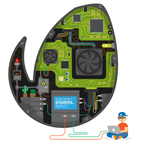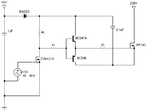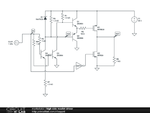Mnt
Member level 5
I want to build a class D amplifier which is supplied by 100Vdc single supply and another 12V supply.
I've tested this output stage in Multisim but there is cross conduction.
Mine input signal is 0V-12V 75khz.
Help me to design an output stage without cross conduction, MOSFET driver IC and without dual supply.


- - - Updated - - -
This is variant 2 of this.
This time another problem -> output probe shows 257 Mhz and simulation stopped due to convergence issue. :x

- - - Updated - - -
I found a error in my 2nd schematic.
This is the corrected one but it has cross conduction. The cross conduction its less than the first schematic.

- - - Updated - - -
I succedded to drop the cross conduction more but its problem again.
Look at the oscilloscope. One channel is input, other is high side gate.
Looks bad.
**broken link removed**
I've tested this output stage in Multisim but there is cross conduction.
Mine input signal is 0V-12V 75khz.
Help me to design an output stage without cross conduction, MOSFET driver IC and without dual supply.


- - - Updated - - -
This is variant 2 of this.
This time another problem -> output probe shows 257 Mhz and simulation stopped due to convergence issue. :x

- - - Updated - - -
I found a error in my 2nd schematic.
This is the corrected one but it has cross conduction. The cross conduction its less than the first schematic.

- - - Updated - - -
I succedded to drop the cross conduction more but its problem again.
Look at the oscilloscope. One channel is input, other is high side gate.
Looks bad.
**broken link removed**




